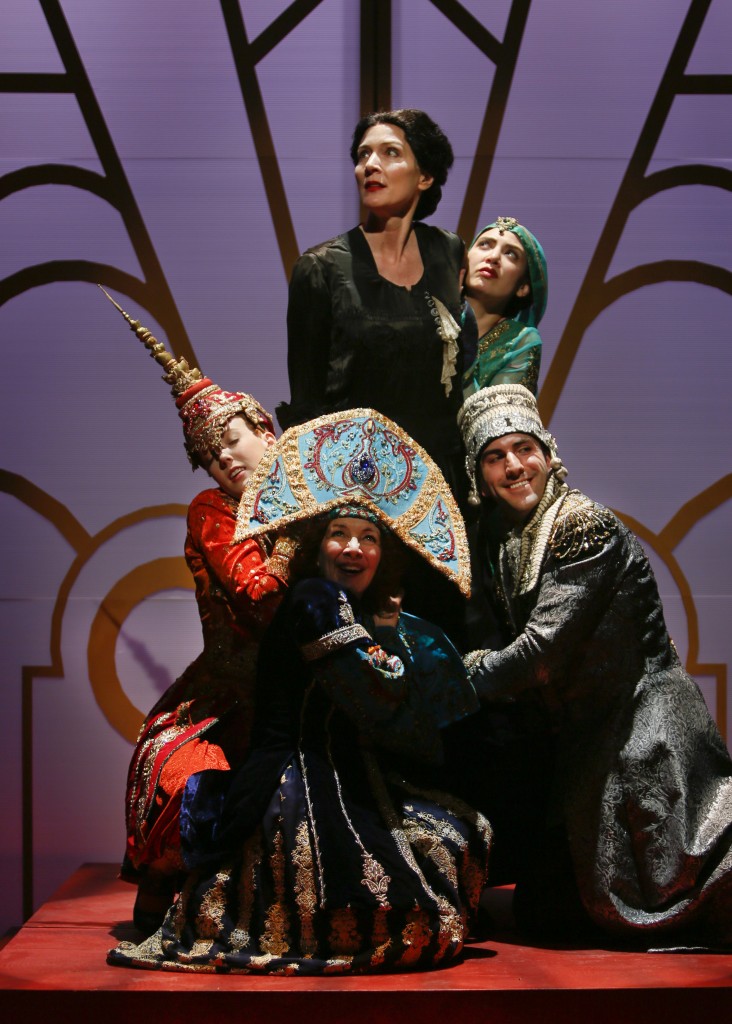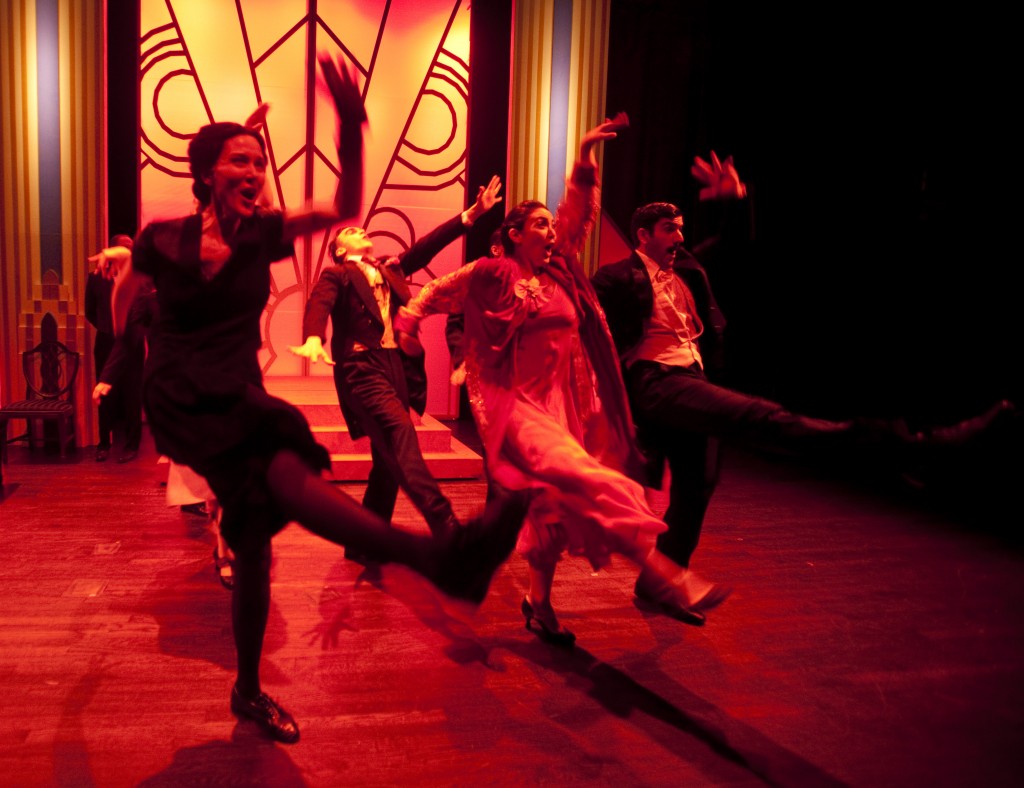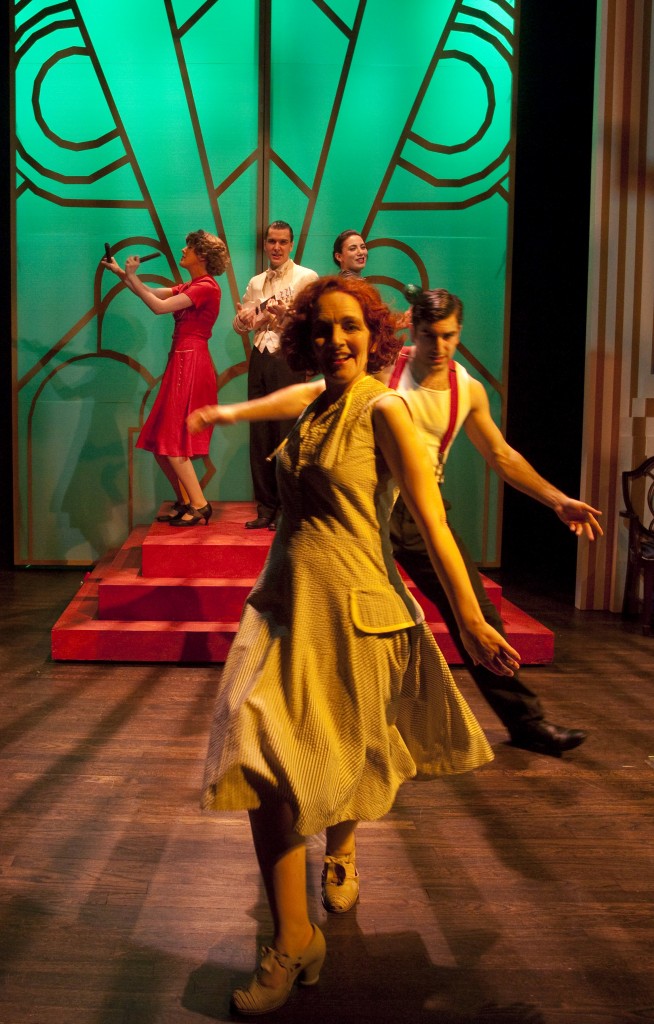
Credit: Tim Matheson
At The Cultch until April 18, 2015
604-251-1363/thecultch.com
Posted April 10, 2015
How did Wallis Simpson, a poor Pennsylvania-born divorcee with a self-described “face like a plank”, ever work her way into the heart of Prince Edward, Duke of Windsor (later the abdicating King Edward VIII of England)? While she was at it, she was earning the animosity of almost everyone else in the British Empire. How did she do it? Chutzpah.
Written by the late Canadian playwright Linda Griffiths (Age of Arousal, Maggie and Pierre), The Duchess begins as an auction of the now-deceased Mrs. Simpson’s estate and memorabilia. Items on the auction block include “a piece of moldy wedding cake” but what brings Wallis back from the grave is to protest the sale of her fabulous jewels, all gifts from the Prince, known to his family and friends as “David”.
Wallis was, apparently, very stylish and so is Griffith’s play. A gorgeous art deco set by Michael Bock sets the stage for cocktail parties and liaisons with the Prince. The jewels – Russian Sapphire (Eileen Barrett), Burma Ruby (Georgia Beaty), Moghul Emerald (Melissa Oei) and African Diamond (Kamyar Pazandeh) – are imagined as characters lavishly costumed by Mara Gottler. Authentic period gowns of the 30s were sourced by Gottler on e-Bay. Xander Williams, impeccably dressed at the grand piano, is Noel Coward, a confidante of Wallis’s. Songs like “Making Whoopee” and “Falling In Love Again” are a musical thread throughout. Under the direction of Sarah Rodgers, the real show-stopper is the entire ensemble whooping it up and slapping their rumps as they do the Black Bottom, a dance considered risqué by the London socialite set and most definitely beyond the pale by the royal family.

Credit: Tim Matheson
At the heart of this Ruby Slippers Theatre production are Diane Brown as Wallis and Craig Erickson as the Prince. Statuesque Brown is a loud and proud, larger-than-life Wallis who speaks directly to us, inviting us to see the much-maligned Wallis from her own perspective. Wallis’s intention was “to wake them [English society] up” – and she did. Did she love the Prince or was she just looking for a meal ticket? Brown tips the scales in favour of love in spite of a flirtation with Hitler. Yes, that Hitler.
Craig Erickson shows Prince Edward’s liberal, populist reputation in a quiet, shy, repressed way. In the words of his official biographer, he was “slavishly dependent” upon Wallis and according to Wikipedia, he was “irretrievably besotted with Wallis, finding her domineering manner and abrasive irreverence toward his position appealing.” But Erickson, his head in Brown’s lap, makes it look like a complicated love.
The playwright, undoubtedly, viewed the relationship with more generosity than did the royal family, the British Empire and Wikipedia.
Brown and Erickson are supported by a cast of eight others playing multiple roles including the royal jewels and socialites, King George V (Joel Garner), King George VI (Kamyar Pazandeh), Queen Elizabeth (Eileen Barrett), Queen Mary (Georgia Beaty), Ribbentrop (Raugi Yu), a ditzy debutante (Melissa Oei) and Hitler (Matt Reznek).
In The Duchess, Wallis describes herself as “the Yoko Ono” of the period – another woman viewed with suspicion mingled with a strange kind of respect. History has still not come to terms with either of them.
A line delivered by Wallis late in the play tolls like a bell and suggests where Griffiths was going in The Duchess: “I am the 20th Century”. Out with old, in with the new. A feisty, assertive, century that survived The Great Depression and bounced back from WWII. Wallis was, in the words of a childhood friend, “bright, brighter than all of us. She made up her mind to go to the head of the class, and she did.” If she wasn’t actually “the 20th Century” she was certainly one of its most interesting, most controversial icons.

Credit: Tim Matheson

